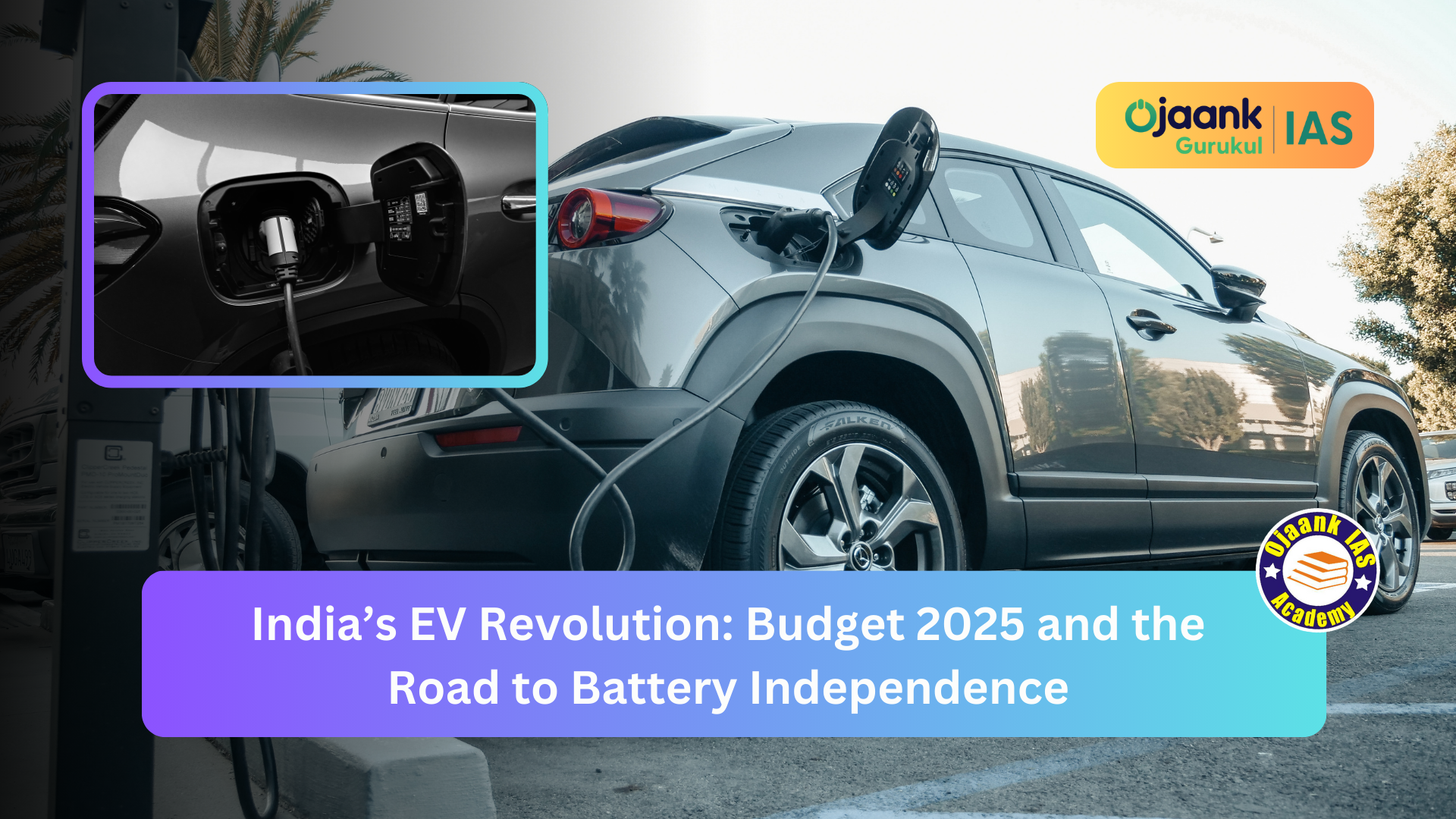India’s EV Revolution: Budget 2025 and the Road to Battery Independence

Blog Outline:
-
Introduction
-
Budget 2025: A Game Changer for EV Manufacturing
-
BYD’s Super E-platform and the Global Race
-
The Battery Bottleneck: Costs and Capabilities
-
Why India Must Reduce Dependence on China
-
EV Penetration: India vs China
-
The Rise of Electric Two-Wheelers in India
-
Trade Diplomacy and EVs: India-US Synergy
-
How India Can Secure the Battery Value Chain
-
The Road Ahead: Policy, Investment, and Innovation
-
Conclusion
 India’s EV Revolution: Budget 2025 and the Road to Battery Independence
India’s EV Revolution: Budget 2025 and the Road to Battery Independence
1. Introduction
India stands at a crucial inflection point in its journey toward clean transportation. With global momentum building around electric vehicles (EVs), the Union Budget 2025 has taken a bold step to align India with the future of mobility. The government's decision to exempt import duties on 63 critical components used in EV and mobile battery manufacturing isn’t just fiscal—it’s foundational.
🌐 Read more about India’s EV Roadmap: Policy, Challenges, and the Way Forward on NITI Aayog’s official website.
2. Budget 2025: A Game Changer for EV Manufacturing
Finance Minister Nirmala Sitharaman’s Budget 2025-26 marked a decisive move: eliminating customs duties on 35 capital goods used in EV battery production and 28 used in mobile batteries. The Finance Bill 2025 solidifies this strategy. It sends a loud signal to manufacturers—India is ready to become a major player in the clean tech race.
These exemptions not only reduce production costs but incentivize domestic players to scale their operations. It also paves the way for foreign companies to consider India as a manufacturing base.
🌐 Explore the Union Budget 2025 Highlights for detailed insights into EV-related policies and exemptions.
3. BYD’s Super E-platform and the Global Race
Meanwhile, Chinese EV giant BYD dropped a game-changing bombshell—a “Super E-platform” that delivers 500 km of range in just 5 minutes of charge. This leap could wipe out range anxiety forever, flipping the convenience equation in favor of EVs.
India must take note: the EV race is global, and innovation is the currency. To stay competitive, we need not just favorable policies but also cutting-edge R&D investments.
🌐 Learn about BYD’s latest innovation, the Super E-platform 3.0, offering a 500 km range with just 5 minutes of charging.
4. The Battery Bottleneck: Costs and Capabilities
Batteries account for nearly 40% of an EV’s total cost. This is a major hurdle for lower- and middle-income consumers in India. Although EVs offer massive long-term savings by reducing fuel dependency, the upfront cost often pushes buyers toward traditional ICE vehicles.
India’s limited capability in battery manufacturing makes us reliant on imports—especially from China, which dominates over 70% of the global EV battery market.
🌐 Discover the latest trends in EV Battery Costs and Projections in this Bloomberg report.
5. Why India Must Reduce Dependence on China
China’s grip on lithium-iron-phosphate (LFP) batteries, now the global standard due to affordability and energy efficiency, puts India in a vulnerable position. To truly become ‘Atmanirbhar’ (self-reliant), we must build indigenous capacity for both upstream (mining, refining) and downstream (cell manufacturing, pack assembly) battery processes.
Positioning India as a reliable alternative in the global EV supply chain also strengthens our geopolitical leverage—especially for countries seeking to diversify away from China.
6. EV Penetration: India vs China
In 2024, EVs made up 45% of car registrations in China. In contrast, India lagged far behind with just 2% market penetration in the passenger car segment. This stark gap underscores the urgency of policy-backed adoption, infrastructure development, and tech innovation.
🌐 Compare the EV market penetration in India and China with data from Statista.
7. The Rise of Electric Two-Wheelers in India
The silver lining? Electric two-wheelers. With 1.14 million units sold in 2024, they now account for 60% of India’s total EV sales. Affordability, ease of charging, and urban usage make them a hit with the masses. This segment can act as the launchpad for broader EV adoption across categories.
8. Trade Diplomacy and EVs: India-US Synergy
While the new import duty exemptions are partially geared toward enhancing trade ties with the United States and avoiding retaliatory tariffs, they serve a much larger vision—clean mobility leadership.
If India can become a tech-transfer hub and production base, the global EV giants will come knocking. And when they do, we must have the infrastructure and policies ready.
🌐 Read about the India-US Clean Energy Partnership on the US Department of Energy’s official website.
9. How India Can Secure the Battery Value Chain
To make real progress, India needs:
-
Investment in local battery R&D labs
-
Public-private partnerships in lithium sourcing
-
Skill development in EV tech
-
Production-linked incentives for battery manufacturing
-
Robust charging infrastructure nationwide
Integration across the value chain will reduce costs, attract global players, and accelerate domestic adoption.
10. The Road Ahead: Policy, Investment, and Innovation
Duty exemptions are just the starting point. For a sustainable EV future, India must:
-
Ensure policy stability
-
Make FAME III (Faster Adoption and Manufacturing of Electric Vehicles) even more aggressive
-
Attract battery tech startups through tax breaks
-
Collaborate internationally for raw material access
The goal is clear—not just to follow the EV revolution, but to lead it.
🌐 Learn more about the FAME India Scheme and its impact on boosting EV adoption.
11. Conclusion
India has taken its first big leap with Budget 2025. But to truly own the electric vehicle future, we must build, innovate, and scale like never before. Reducing dependence on China, forging strategic alliances, and creating a vibrant EV ecosystem isn’t just a policy imperative—it’s a national mission.
The road to electric mobility is long, but the engine has been switched on. Time to hit the accelerator.